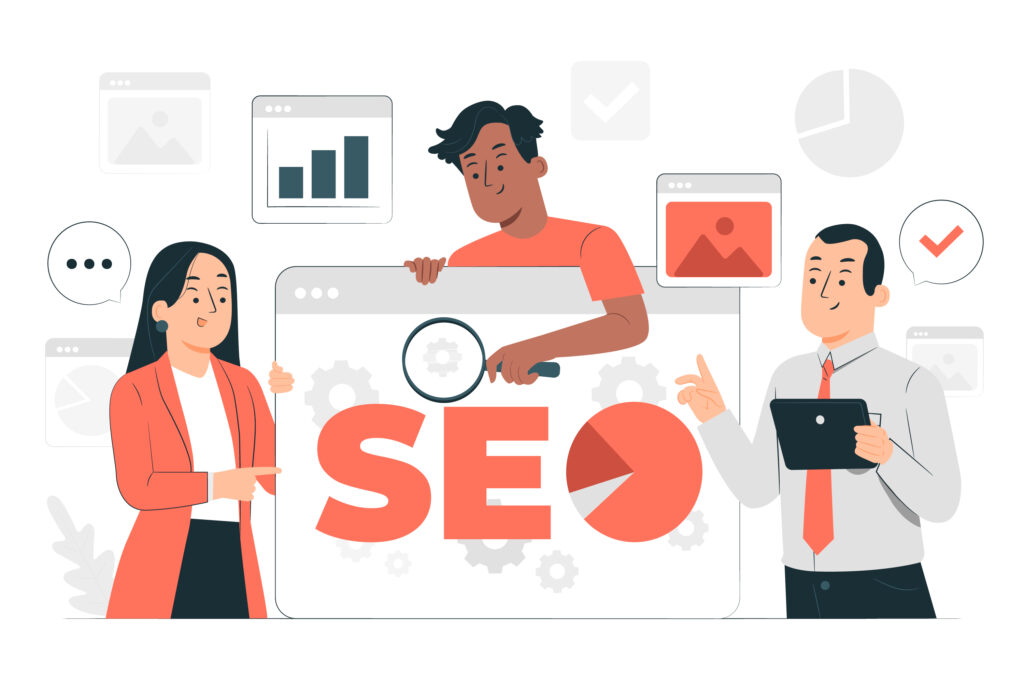1. Introduction (Mastering SEO):
In the vast landscape of digital marketing, understanding the crucial role of HTML tags in SEO is paramount. These HTML elements play a pivotal role in determining a website’s search engine visibility and overall performance.

Table of Contents
2. Importance of HTML Tags in SEO (Mastering SEO):
HTML tags act as signposts for search engines, guiding them through the content and providing context. A strategic implementation of HTML tags enhances the chances of a website ranking higher on search engine results pages (SERPs).
3. Key HTML Tags for SEO (Mastering SEO):
a. Title Tag (Mastering SEO):
The title tag is the first HTML element search engines consider. Craft a concise and descriptive title, incorporating relevant keywords for optimal SEO impact.
How to Optimize Title Tags for SEO:
Ensure your title is under 70 characters, captivates user interest, and accurately reflects the page content.
b. Meta Description:
Meta descriptions serve as a brief summary of a page’s content. Leverage this space to entice users to click through to your site.
Crafting Compelling Meta Descriptions:
Keep it within 160 characters, include a call-to-action, and highlight the unique value proposition of your content.
c. Header Tags (H1, H2, H3)
Header tags structure content hierarchically. Proper usage aids readability and signals the importance of each section to search engines.
Utilizing Header Tags Effectively:
Use H1 for main titles, H2 for subheadings, and H3 for further subsections. Maintain a logical hierarchy for user-friendly navigation.
d. Alt Attribute for Images:
Alt attributes provide alternative text for images, aiding accessibility and contributing to image SEO.
Enhancing Image SEO with Alt Attributes:
Describe images concisely, incorporating relevant keywords. Ensure accuracy and relevance to improve overall SEO performance.
4. How to Optimize Title Tags for SEO (Mastering SEO):
Crafting an effective title tag involves balancing creativity and SEO optimization. Keep it concise, engaging, and reflective of the page content.
5. Crafting Compelling Meta Descriptions:
Meta descriptions are your website’s elevator pitch. Create a compelling summary under 160 characters, prompting users to explore further.
6. Utilizing Header Tags Effectively:
Structure your content with clear headers. H1 for main titles, H2 for subsections, and H3 for finer details. This not only aids SEO but enhances user experience.
7. Enhancing Image SEO with Alt Attributes:
Don’t overlook image SEO. Describe images accurately in the alt attribute, incorporating relevant keywords for improved search engine recognition.
More about SEO
Our recent post – Mastering Digital Platforms

8. Conclusion of SEO (Mastering SEO):
Mastering the art of optimizing HTML tags for SEO is a game-changer. Implement these strategies, and watch your website climb the ranks, attracting the organic traffic it deserves.
FAQs:
Q: What is the primary purpose of the title tag in SEO?
A: The title tag serves as a concise and descriptive label for a webpage. It plays a crucial role in SEO by providing search engines and users with an immediate understanding of the page’s content and relevance to a search query.
Q: Why is it important to keep the meta description under 160 characters?
A: Search engines often truncate meta descriptions if they exceed 160 characters, impacting the user’s ability to quickly grasp the content. Keeping it within this limit ensures that the entire description is visible on search engine results pages, encouraging clicks.
Q: How can header tags contribute to better SEO and user experience?
A: Header tags (H1, H2, H3) organize content hierarchically, making it easier for both search engines and users to understand the structure of a page. Proper usage enhances readability, signals content importance, and contributes to a positive user experience.
Q: What role do alt attributes play in image SEO?
A: Alt attributes provide alternative text for images, serving as a textual description. This not only aids accessibility for users with visual impairments but also contributes to image SEO by providing search engines with context about the content and relevance of the images on a page.
Q: How does schema markup benefit SEO?
A: Schema markup adds structured data to a webpage, providing additional context to search engines about the content. This can result in rich snippets on the search engine results pages, enhancing the visibility and click-through rate of the page.
Q: Why is it essential to stay updated with SEO trends?
A: SEO is a dynamic field with frequent algorithm updates and industry changes. Staying informed about the latest trends ensures that your SEO strategies remain effective. Adapting to algorithm shifts, emerging technologies, and user behaviour helps maintain and improve your website’s search engine visibility over time.

